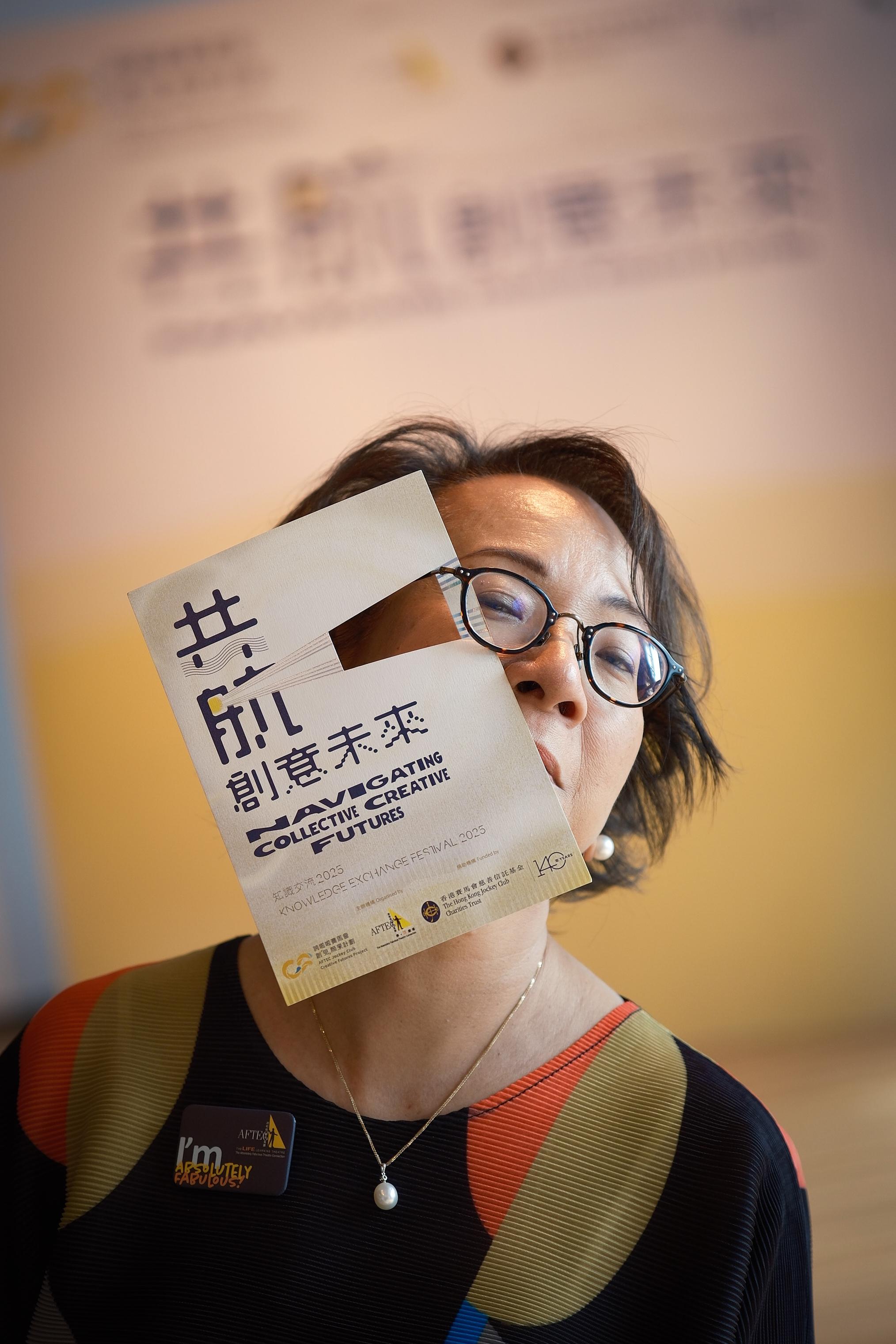Listen to #Hashtag Hong Kong every Sunday morning at 8.15
Focusing on issues affecting civil society, we'll hear from representatives of NGOs, associations, statutory bodies, and non-profit groups.
(Sundays 8.15am - 8.25am)

Good morning Hong Kong! On this first Sunday of 2026, I wish everyone a Happy New Year filled with hope, and all things bright and beautiful.
When we speak of the arts, what comes to mind? Performances? Exhibitions?
Perhaps your child’s dance showcase? For many professionals, the arts might be something in the back of their mind. But there’s actually a deeper, quieter power in the arts that can transform lives from within.
Let me share a story. Mr. Lee, an educator, once told us after a workshop: “Life has always been full of responsibilities. My daily routine was dull, just rushing to finish one task after another. The workshop made me realise that the arts lit up a dark cavern within me. I hope they become a set of keys for the rest of my life!” What moved him so deeply? It was more than a break from routine. The arts offered an interactive platform that engaged his emotions, sparked his imagination, and giving him a creative voice.
At the Absolutely Fabulous Theatre Connection or AFTEC, we focus on reigniting creativity. While our shows and exhibitions represent the more visible aspect of the arts, we also explore their deeper, transformative powers to create lasting social impact.
AFTEC's programs are built on strong partnerships that typically last one to three years, allowing the true magic of the arts to unfold over time. Consider the impact: so far, more than a quarter of a million students have participated in our theatre productions and various other initiatives.
A student struggling with behavior issues finds stability through the Sm-ART Youth program, which spans three years. Teenagers from disadvantaged backgrounds have won Bravo! theatre awards—one of the students has become a rising film star, while the other is now a professional dancer.
In addition, at HKU’s Medical School, future doctors develop their skills in human connection through our arts-based workshops. Why? To nuture the interpersonal abilities that no machine can replicate.
Here’s our insight: when executed effectively, arts education transforms perspectives. It opens windows and reveals new landscapes. In an age where knowledge is just a click away, creative mindsets are essential for helping both children and adults thrive.
As you know, economic poverty is devastating; however, the poverty of imagination can be just as harmful to our future. Underdeveloped imaginations confine many to a monotonous daily routine, leaving little room for inspiration. Despite advances in technology making repetitive tasks easier, valuable capacities and human potential remain untapped.
This untapped potential is our city's greatest asset because people are our most valuable resources. So, how do we cultivate it? Not by adding more tasks to the grind, but by fundamentally changing the environment in which our minds develop. This requires a shift in perspective.
First, we must prioritize the depth of creative learning over its speed. Our educational and enrichment programs should embrace a slower pace. This isn't about dismissing achievement, but about finding the right balance. Over the past five years, our Jockey Club Creative Futures program has exemplified this approach. The true reward is not just a year-end showcase but a community of practitioners dedicated to nurturing talent through critical thinking, empathy, and creative confidence.
Second, we need to reimagine the arts as the primary means of fostering human connection in an age dominated by algorithms. Beyond performances, the arts cultivate curiosity, aesthetic awareness, and critical thinking, enabling meaningful conversations. When medical students at HKU participate in our drama and movement workshops, they're not just learning to act; they’re honing their abilities to read non-verbal cues, understand patient narratives, and build the empathetic resilience necessary for leadership.
Finally, the future belongs to connectors. We must transition from subject-based training to interdisciplinary thinking. Since 2017, AFTEC has trained teachers and artists to co-design and co-teach, fostering creative partnership in classrooms. This integration of disciplines is essential for developing the broader, interconnected thinking that unlocks new solutions.
Imagine expanding this ecosystem: if parents had tools for fostering creative conversations at home and corporations embraced these workshops for their teams, artistic intelligence would complement artificial intelligence, unlocking a collective potential unmatched by technology.
This New Year, let’s recognise the arts as vital as the air we breathe, nurturing the creative and resilient minds that are Hong Kong’s greatest asset. Thank you, may your 2026 be filled with imagination.
